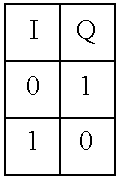Method of self-synchronization of configurable elements of a programmable module
a programmable module and configurable element technology, applied in the direction of program control, transmission, instruments, etc., can solve the problems of reconfig trigger necessitating a considerable interconnection and configuration expense, a large administrative complexity, and a time-controlled synchronization type of problems
- Summary
- Abstract
- Description
- Claims
- Application Information
AI Technical Summary
Problems solved by technology
Method used
Image
Examples
Embodiment Construction
FIG. 1 shows how a loop construct can be implemented by using triggers. In this example, a macro 0103 is to be executed 70 times. One execution of the macro takes 26 clock cycles. This means that counter 0101 may be decremented by one increment only once in every 26 clock cycles. One problem with freely programmable modules is that it is not always possible to guarantee that processing of macro 0103 will actually be concluded after 26 clock cycles. For example, a delay may occur due to the fact that a macro which is to supply the input data for macro 0103 may suddenly require 10 more clock cycles. For this reason, the cell in macro 0103 sends a trigger signal to counter 0101, causing the result of the calculation to be sent to another macro. At the same time, processing of macro 0103 by the same cell is stopped. This cell "knows" exactly that the condition for termination of a calculation has been reached.
In this case the trigger signal sent is a STEP trigger, causing counter 0101 t...
PUM
 Login to View More
Login to View More Abstract
Description
Claims
Application Information
 Login to View More
Login to View More - R&D
- Intellectual Property
- Life Sciences
- Materials
- Tech Scout
- Unparalleled Data Quality
- Higher Quality Content
- 60% Fewer Hallucinations
Browse by: Latest US Patents, China's latest patents, Technical Efficacy Thesaurus, Application Domain, Technology Topic, Popular Technical Reports.
© 2025 PatSnap. All rights reserved.Legal|Privacy policy|Modern Slavery Act Transparency Statement|Sitemap|About US| Contact US: help@patsnap.com



